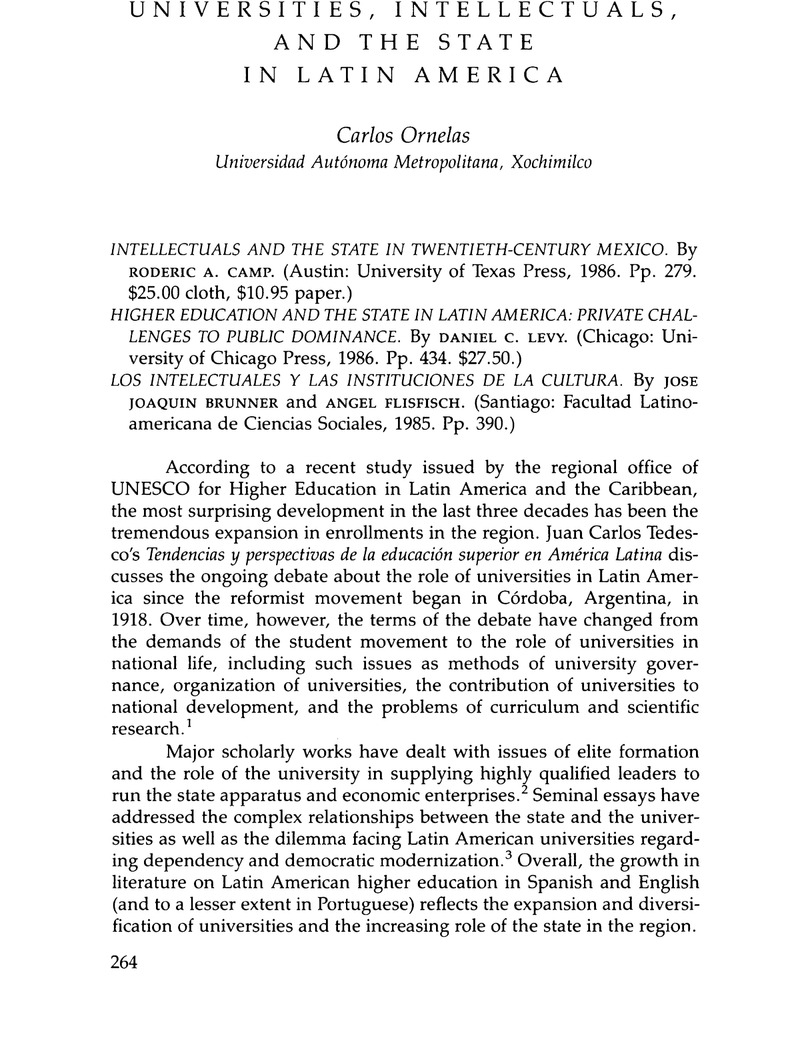No CrossRef data available.
Published online by Cambridge University Press: 12 October 2022

1. Juan Carlos Tedesco, Tendencias y perspectivas de la educación superior en América Latina (Paris: UNESCO, 1983), 6.
2. For a conventional Western social sciences perspective, see Elites in Latin America (London: Oxford University Press, 1967), edited by Seymour Martin Lipset and Aldo Solari. For radical and neo-Marxist approaches, see Universidad, clases sociales y poder, edited by Germán W. Rama (Caracas: Ateneo, 1982).
3. See, for example, La crisis de la educación superior en México, edited by Gilberto Guevera Niebla (Mexico City: Nueva Imagen, 1981); Noel McGinn, “Autonomía, dependencia y misión de la universidad,” Foro Universitario, series 2, no. 4 (Mar. 1981):18-28; and Darcy Ribeiro, La universidad necesaria, 4th edition (Mexico City: Universidad Nacional Autónoma de México, 1982).
4. Where Camp provides names of leading intellectuals (in tables 3 and 4), no women are listed. Camp's methodology for choosing elite intellectuals relied heavily on respondents. He selected only five women to answer his questionnaire (pp. 43–46). Although the lack of women in his universe should have led Camp to suspect a possible bias in answering the survey, this issue is not discussed. It therefore seems reasonable to suspect bias in the process of selecting respondents. To my knowledge, there are many women who fit Camp's criteria for leading intellectuals.
5. These data were used in a previous work. See Roderic Ai Camp, La formación de un gobernante: la socialización de los líderes políticos en México post-revolucionario (Mexico City: Fondo de Cultura Económica, 1981).
6. This is not to suggest, however, that politicians know little about the subject; I think they know quite well what they are talking about. Levy systematizes some of those voices. For another study on Mexican private universities from a somewhat more political perspective, see Patricia de Leonardo, La educación superior privada en México (Mexico City: Línea, 1983).
7. Daniel Levy, University and Government in Mexico: Autonomy in an Authoritarian System (New York: Praeger, 1980). For a critique of this book, see Noel McGinn's and Carlos Ornelas's review of that work in the Comparative Education Review 26, no. 1 (1982): 15–17; and Susan Street's review in the Journal of Higher Education 53, no. 6 (1982): 716–18.